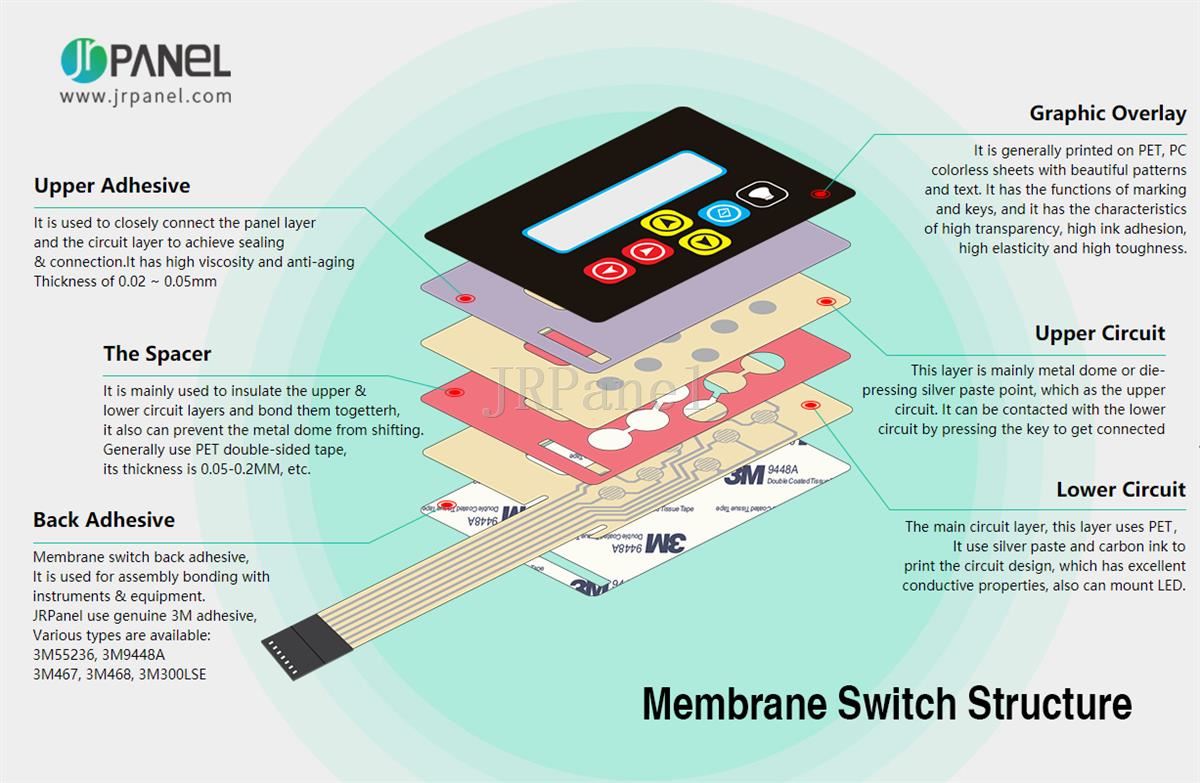How Membrane Layer Switches Over Contribute to the Sturdiness of Electronic Control Panels
Membrane layer buttons play a vital role in improving the durability of digital control panels, mostly with their multi-layered building which offers reliable defense against ecological variables such as dampness and dirt. The lack of moving components considerably decreases the probability of mechanical failings, making membrane switches over perfect for demanding applications.
Definition of Membrane Buttons

Membrane buttons are made to be slim and lightweight, making them suitable for applications where room is limited. They can be produced in numerous forms, sizes, and shades, supplying versatility in design that meets visual and functional demands. In addition, membrane buttons can incorporate various modern technologies, such as tactile feedback and LED indicators, enhancing customer experience.
Because of their building, membrane layer buttons are often resistant to dust, wetness, and basic wear, adding to their longevity sought after environments. Their smooth design not only helps with easy cleansing however likewise minimizes the risk of mechanical failing, making them a favored selection for manufacturers looking for trusted user interfaces in their electronic control board.
Security Versus Ecological Aspects
The layout of membrane layer switches naturally provides a level of security versus various ecological elements, which is important for keeping capability in challenging conditions - Membrane Switch. These buttons are generally built with layers of versatile products that secure internal elements from dampness, dust, and impurities. By enveloping the circuitry, membrane changes decrease the danger of short circuits and deterioration, which can substantially hinder performance
In addition, making use of durable adhesives and sealers throughout production enhances their resistance to environmental difficulties. Membrane switches can endure direct exposure to chemicals and solvents, making them appropriate for markets such as food handling and health care, where health and sanitation are critical. Their smooth surface style likewise stops the accumulation of dirt and germs, assisting in easier cleansing and maintenance.
Temperature level changes are an additional environmental problem, and membrane switches are engineered to operate effectively across a wide variety of temperatures (Membrane Switch). This flexibility ensures that control panels stay functional in different settings, from industrial environments to consumer electronics
Influence On User Communication
Individual communication with electronic control board is considerably influenced by the design and functionality of membrane switches. These buttons provide a responsive interface that boosts the overall user experience, enabling for user-friendly navigating and control. Their responsive nature makes certain that customers obtain immediate comments upon activation, which is critical for jobs needing accuracy and effectiveness.
Additionally, the smooth surface of membrane switches facilitates simple cleansing and upkeep, promoting user confidence in the reliability of the user interface. This tidiness is especially crucial in atmospheres where hygiene is critical, such as medical or food processing find out here now setups. Furthermore, the small and lightweight layout of membrane switches adds to the visual allure of control board, encouraging individual interaction via a contemporary and sleek appearance.
Additionally, the assimilation of aesthetic components, such as published icons and backlighting, helps individuals rapidly identify features, reducing the finding out contour connected with new devices. Consequently, individuals can operate tools more successfully, bring about raised efficiency and fulfillment. In summary, membrane switches play a pivotal function in improving customer communication by incorporating capability, aesthetic appeals, and convenience of use, eventually resulting in boosted operational performance.
Style Versatility and Personalization
Layout versatility click and personalization are necessary aspects of membrane buttons, enabling manufacturers to tailor digital control board to certain applications and customer needs. This versatility enables the combination of numerous layout elements, such as colors, graphics, and textures, which can boost the aesthetic allure and user interaction of the control board.
Membrane switches can be tailored in size and form, fitting a large range of gadgets and applications, from commercial equipment to customer electronics. This adaptability makes sure that manufacturers can develop instinctive user interfaces that straighten with customer expectations and operational requirements. In addition, the capability to integrate special attributes such as backlighting or responsive comments additionally boosts functionality, enabling a more interactive experience.
Furthermore, the production process for membrane layer changes sustains the rapid prototyping of designs, enabling manufacturers to repeat and improve their concepts swiftly. This ability not only speeds up the development timeline however additionally guarantees that the end product fulfills certain functional and visual requirements.

Cost-Effectiveness and Durability
Cost-effectiveness and longevity are considerable advantages of membrane buttons, making them an attractive alternative for producers and end-users alike. These buttons are usually more economical to produce than typical mechanical switches, mainly due to their simplified production processes and the decreased variety of parts called for. This cost advantage prolongs not only to preliminary manufacturing however also to lasting functional costs, as membrane layer switches usually call for less maintenance and have a lower failing rate.
In addition, the durability of membrane switches over adds to their general value. Constructed from resilient materials, they are immune to environmental variables such as wetness, dust, and chemicals, which can bring about premature wear in various other switch kinds. The absence of moving components minimizes mechanical failing, allowing membrane layer switches over to maintain performance over extended periods.
This toughness is specifically valuable in applications calling for consistent efficiency under requiring conditions, such as medical devices and commercial devices. Ultimately, the mix of cost-effectiveness and long life makes membrane switches over a financially viable choice for suppliers, providing trustworthy services that hold up against the test of time while optimizing monetary considerations.
Verdict
Finally, membrane layer buttons significantly boost the toughness of digital control panels via their durable construction and safety features. By efficiently shielding wiring from environmental dangers and reducing the threat of mechanical failure, these switches ensure regular efficiency in requiring applications. why not find out more The smooth design promotes hygiene and ease of upkeep, while customization choices allow tailored options for various demands. Generally, membrane layer changes represent a trustworthy and cost-effective choice for enhancing the longevity and functionality of electronic control systems.